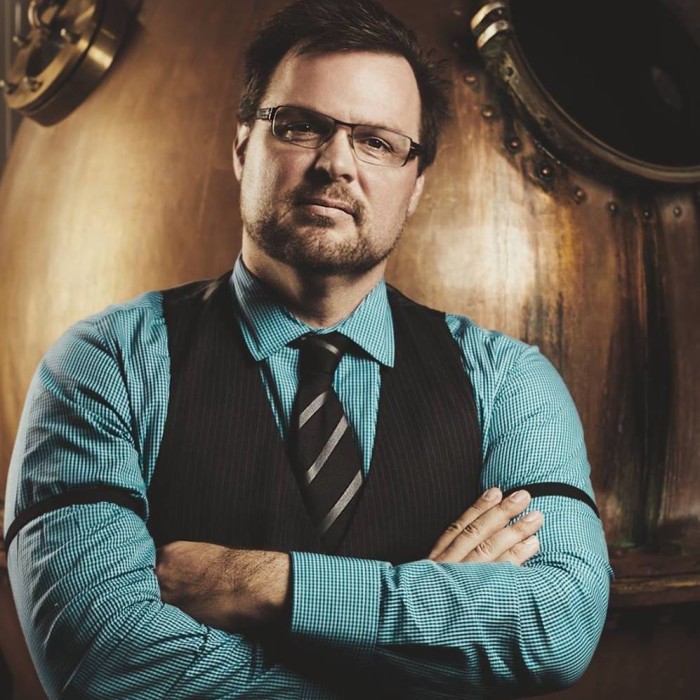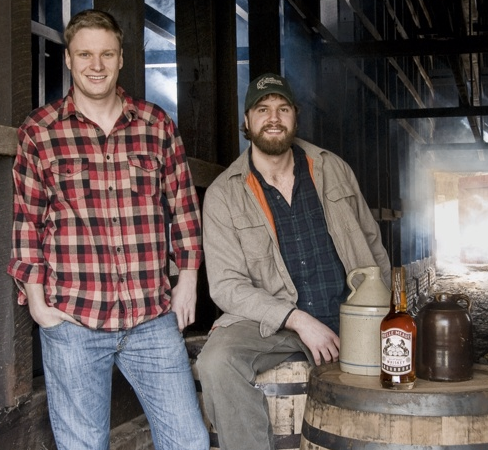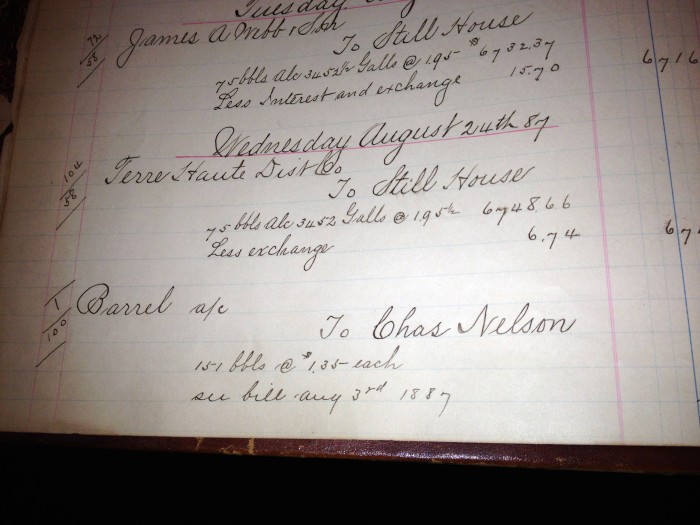Who Really Made Your Favorite Small Batch Rye Whiskey?
In a move that surprised many craft spirits aficionados, the respected industry magazine Whisky Advocate recently named MGP Ingredients its Distiller of the Year. Right now, you're probably wondering, "Who's that?" Well, you're not alone.
Unlike past honorees, including such well-known producers as Beam Suntory and Diageo, MGP is not a brand that most consumers are familiar with. However, if you have enjoyed a nip of rye from Bulleit, Templeton, George Dickel, High West, Redemption or Angel's Envy, then you've tasted the products from the company's huge stills. The Lawrenceburg, Indiana–based food and beverage plant specializes in converting grains into bakery products, pastas and distilled spirits, hence the company's name, which stands for Midwest Grain Products. The Lawrenceburg division of MGP also has been producing whiskey since 1847 and spent more than seven decades as the primary supplier of straight rye whiskey for Seagram's blended products.
Recently, the spotlight has turned to MGP and its distiller Greg Metze as the producer of some damned fine bourbon and rye. In announcing the distiller award, Whisky Advocate managing editor Lew Bryson suggests drinkers should "look for 'Distilled in Indiana' in tiny print on all those whiskey labels; you can count on the quality." After years of quietly making whiskeys for various NDPs (non-distilling producers) across the country — companies who marketed these products under their own brand names — MGP has lifted the cloak of secrecy around its operations.
"I think companies should just be themselves. They should be honest with who they are. If you are big, be proud of that and the advantages that come with it. If you are small, be proud of that. But just do not bullshit me. The consumer is tired of phony companies."
This new openness is, in large part, the result of lawsuits that called for these marketers of purchased whiskey to be more transparent about the geographic source of their products. Most notably, Templeton was enjoined by a class action suit to pay refunds to consumers for reputedly "deceptively marketing" its rye whiskey as an Iowa product, an apparent attempt to play off of the historical equity of what it claimed was a "Prohibition-era recipe." What was actually in the bottle of Templeton was one of MGP's standard mash bills that the company mass-produces for other producers at its Indiana plant. (Templeton's rye also adds an "alcohol flavoring agent" to the standard MGP mash bill.) If you've enjoyed a Manhattan made with Templeton Rye, of course, you might be quick to say, "Not that there's anything wrong with that."
But not everyone shares that attitude. Darek Bell, co-owner of the innovative and award-winning Corsair Artisan Distillery, with locations in Kentucky and Tennessee, has no problem with the juice coming out of MGP, but he takes issue with the lack of transparency that the company was a part of over the years. "MGP is clearly an amazing distiller, and I have nothing but respect for their work. My problem is with the fake craft whiskey distillers who buy MGP and give it a local-sounding name. They are being dishonest to the consumer and are crafty, not craft whiskey. MGP has acted as an enabler to allow these companies to thrive, but they have been honest with who they are."
That word "craft" is a ticklish concept when it comes to spirits. The American Distilling Institute defines it based on the scale of a distillery, reserving the term for companies that produce less than 100,000 proof gallons annually. Bell's personal take is more esoteric. "Craft spirits are very simple," he says. "Craft means small, independent, and actually made by that distillery. Anyone trying to confuse this simple issue is just bullshitting you to promote their own interests."
In Nashville, brothers Andy and Charlie Nelson have taken advantage of MGP to help them resurrect Nelson's Greenbrier Distillery, a company founded by their great-great-great-grandfather and one that once dwarfed Jack Daniel's in the Tennessee whiskey business but did not survive the lean years of Prohibition. Greenbrier has sourced MGP juice for its Belle Meade Bourbon brand, selecting aged barrels from two different mash bill recipes and blending them to create its own unique product. "Craft is in the eye of the beholder," says Andy Nelson. "We're not obsessed with calling ourselves 'craft.' Bacardi uses the term, and I agree. If you make a quality product and pay attention to the process, you're craft."
Charlie Nelson weighs in: "There's an inherent craft in whiskey. Every barrel is unique, because no two oak trees are the same, and the barrels and the whiskey are made by humans. At the end of an aging cycle, two barrels filled with the same recipe and aged next to each other in a rickhouse are going to taste different. We also release single barrels that we taste and find to be exceptional, so we don't blend them. The single barrels really let MGP shine."
Greenbrier recently began to produce its own product in a Nashville facility, which it plans to release after aging as an additional alternative to the MGP-sourced Belle Meade Bourbon. But Andy Nelson, the company's head distiller, doesn't see a huge difference between what his company buys and what it distills on its own. "I don't call myself a master distiller, because I'm not one yet," he says. "I find it interesting that in Scotland, the master scotch blender is the celebrity. I never hear about the distillers. The goal is to create consistency in your brand even with the fluctuations from barrel to barrel."Bell doesn't necessarily share that belief. "I think the heart of the matter is the big guys are mad that they cannot just keep making the same old stuff and that they have to change due to evolving consumer tastes," he says. "They are mad that they have to change, period. The newer distilleries can quickly adapt to the consumers' changing relationship with their products. Consumers want to support small, local businesses embedded in their community that they feel a personal connection with. Small distillers are also experimenting with new types of spirits and can experiment quickly. I wish the term 'microdistillery' had caught on as it keeps the focus on small size, and it is easier to define."Charlie Nelson has a different attitude and is thankful that MGP allowed his company to create its own brand before it had the money to build a distillery of its own. "We didn't get into this business to be a 'micro' anything," he says. "Our ancestor who started Greenbrier sourced whiskey on top of what he produced on his own, just like we do. It has been the norm in the industry forever. We want to grow, and without the excellent distillate from MGP, we could not have built our own facility so quickly." In fact, during their historical research before starting up their business, the Nelsons discovered a receipt showing that the original Charles Nelson had purchased 151 barrels of whiskey in 1887 from the forerunner of the same distillery that became MGP. "He paid $1.35 per barrel," the younger Charles Nelson jokes. "I wish I could get that same price again."
Whisky Advocate's recognition of MGP and distiller Greg Metze shines a major light on the excellent spirits that come out of the facility, but Louisville-based whiskey writer Fred Minnick was an even earlier proponent of the company. Minnick, the author of the excellent primer Bourbon Curious, drew attention to what was happening in Lawrenceburg in a 2013 piece for Whisky Advocate, and he invited Metze to be a part of a series of "Meet the Master Distiller" events that he hosts at the Kentucky Derby Museum. Surprisingly for a man who has been personally responsible for literally millions of gallons of noteworthy bourbon and rye enjoyed by consumers through the years, Minnick's event was the first time that Metze had ever been asked to sign a bottle of his distillate.
Minnick is unapologetic in his respect for MGP and Metze. "Hardcore whiskey consumers tend to get caught up on the bottlers and the backstories of the brands using MGP whiskey, but they never complained about the whiskey," he says. "When my Whisky Advocate story about MGP and Greg Metze was published, that was kind of the distillery's first public appearance to a world that is accustomed to press releases. The fact is, the whiskey coming out of MGP is great. Not good. It's great. The ryes dominate the awards, and the eight-year-old and older bourbons are neck and neck with Kentucky's very best. Metze is a real master distiller, too."
Minnick prefers to focus on what's in the bottle over what's printed on the label, though he does believe in transparency. "As for the NDP phenomenon, this is nothing new," he says. "Since whiskey companies have laid down stocks, they've sold bulk whiskey to bottlers, who even created phony backstories. The difference today is we're accustomed to transparency as a consumer population. Transparency is somewhat new to the bourbon industry. Overall, since the class-action lawsuits, there's been a greater attention to detail about telling the truth."
Bell sums up his argument about the topic this way: "I think companies should just be themselves. They should be honest with who they are. If you are big, be proud of that and the advantages that come with it. If you are small, be proud of that. But just do not bullshit me. The consumer is tired of phony companies, as am I."





